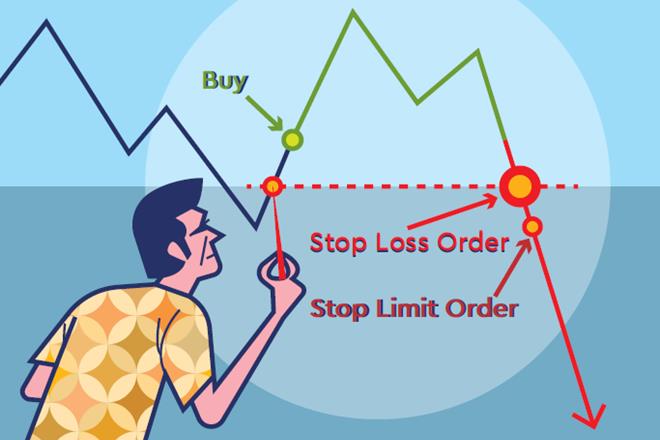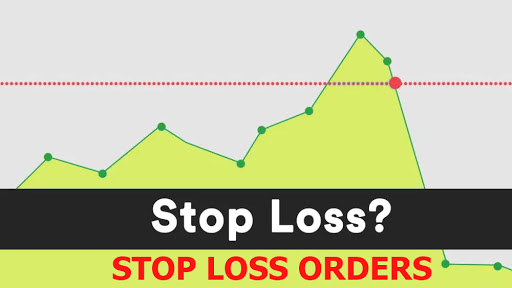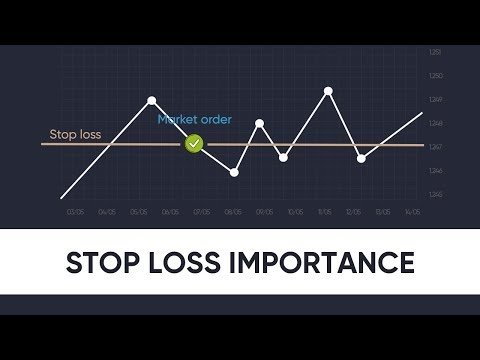
Stop-loss orders are quite popular in the forex market and offer a unique tool to help investors reduce their losses.
While most new forex traders often forget the importance of this tool, a stop-loss order can make a big difference and change the way you approach forex trading.
It is also worth noting that there are various types of stop-loss orders as well as strategies used to ensure they serve the intended role.
Here is a brief overview of stop-loss orders, including what it means, importance and tips to help you in stop loss trading.
What is a stop-loss order in the forex?
As the name suggests, a stop-loss order is placed to stop the trader from losing money. The trader makes a stop-loss order with their FX or CDF brokers instructing them to sell the security when prices reach a certain point.
For instance, In stop loss forex, if you purchase EUR/USD at 1.1500, you can set the stop-loss order at 1.1485, which triggers a sale if the prices fall below the set threshold.
In this case, you will only lose up to 15 pips. Stop-loss orders are set to stop the trader from losing money beyond a specific amount or percentage.
Types of stop-loss orders
Implementing a stop-loss order can protect the trader from losses or set a small loss margin to accommodate short-term fluctuations.
Traders usually combine stop loss trading with other strategies to optimize profitability, so it is essential to review other available tools.
However, if you are a new forex trader, here are four main types of stop-loss orders you should consider:
1. Fixed and trailing stop-loss order
Fixed stop-loss orders are triggered when the market prices fall beyond a predetermined price. For instance, if you buy into EUR/USD at 1.1500 and set the stop loss at 1.1450 the order will be implemented as soon as prices fall below 1.1450.
The order is automatically transformed into a sell order that allows the broker to exit the position at prevailing prices, in this case limiting your loss to 50 pips.
However, if prices go up to 1.1600, you can adjust the stop-loss order to 1.1550. Brokers allow traders to set trailing stop-loss orders that determine how many pips the order trails market the highest prices.
2. Volatility stop-loss order
Volatility refers to the range of movement a stock or currency pair can move within the day.
It is a powerful tool investors use to calculate the true range of movement and set stop-loss orders to prevent losses when markets fluctuate outside the prevailing range of movement.
For instance, if the currency pair moves by up to 2% up or down, setting a percentage stop at1% or lower could trigger a sell and result in significant losses. A volatility stop-loss order is usually used with other techniques.
3. Chart line stop-loss order
Chart lines are based on a technical analysis of the market. This stop-loss order allows the trader to set their limit based on a line drawn on the market movement chart.
The line may be a trend line or Fibonacci retracement. Chart line orders are often market or limit orders which accommodate movements within ten pips of the selected line.
When prices fall below the chart line, the broker automatically exits the market to avoid further losses.
4. Time stop-loss order
Time stop-loss orders are commonly used to exit markets if nothing much goes on for extended periods.
This order is set to avoid further trading or losses after a specified amount of time has elapsed and is ideal for markets that don’t seem to be moving in any direction.
If you aren’t hitting the stop loss or target profit for a while, a time stop-loss order can exit you out of such markets after a predetermined amount of time.
Importance of stop-loss order
The merits of stop-loss trading orders are straightforward.
These orders set a limit for the maximum loss you are willing to accept and prevent you from suffering significant losses on your security positions.
Here are some reasons why you should implement at least one stop loss in your forex trading strategy.
-
Protects your position
Forex investors are tasked with making trade decisions based on market movements. Usually, this involves a targeted profit and maximum acceptable loss.
The forex market keeps fluctuating, which makes it difficult to predict when you will make a profit or loss.
A stop-loss can help you protect your position and ignore typical market movements that do not hit your target profit or loss limit.
This is perfect for long-term security positions, but you can still set stop losses on short-term positions. Since the order is adjustable, traders can raise or lower the limit based on market changes.
-
No need to watch the market
Watching the market is time-consuming and less exciting than it seems.
For a trader, manually implementing buy or exit orders requires constant watch on market fluctuation and patience.
If prices fall below the maximum losses you are willing to take, the natural decision is to exit the market.
Using the target profit and trailing stop-loss order can help you exit the market by automating the process.
It offers the perfect automation for those on vacation or if you don’t plan to watch the forex market for an extended period.
-
Prevents losses
A stop-loss essence is to prevent the trader from losing their investment.
You can set a stop-loss order that is the exact buying price to avoid losses, or set it lower than the buying price based on the maximum loss you are willing to take.
It is crucial to review the market movement before placing a stop loss. At its best, a stop loss frees you from continually watching the market and also triggers a quick sale to prevent losses when the market plummets.
Conclusion
There are several trading tools and strategies available for forex investors.
A stop-loss order merely ensures your short-term and long-term positions are protected while restraining your losses.
It is essential to understand how each stop loss works and how you can use it to protect your security positions in the forex market.







